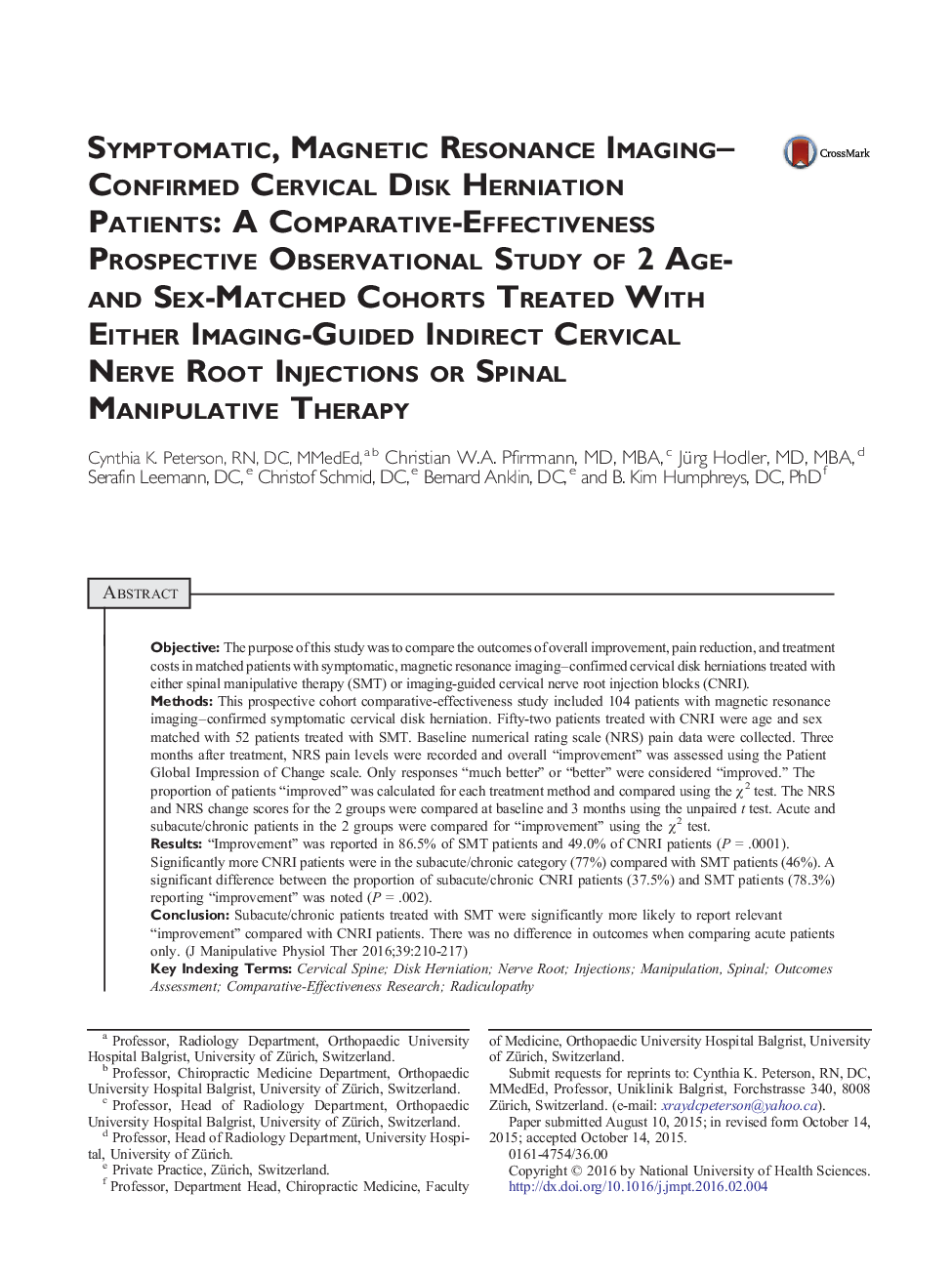| کد مقاله | کد نشریه | سال انتشار | مقاله انگلیسی | نسخه تمام متن |
|---|---|---|---|---|
| 5863825 | 1135616 | 2016 | 8 صفحه PDF | دانلود رایگان |
ObjectiveThe purpose of this study was to compare the outcomes of overall improvement, pain reduction, and treatment costs in matched patients with symptomatic, magnetic resonance imaging-confirmed cervical disk herniations treated with either spinal manipulative therapy (SMT) or imaging-guided cervical nerve root injection blocks (CNRI).MethodsThis prospective cohort comparative-effectiveness study included 104 patients with magnetic resonance imaging-confirmed symptomatic cervical disk herniation. Fifty-two patients treated with CNRI were age and sex matched with 52 patients treated with SMT. Baseline numerical rating scale (NRS) pain data were collected. Three months after treatment, NRS pain levels were recorded and overall “improvement” was assessed using the Patient Global Impression of Change scale. Only responses “much better” or “better” were considered “improved.” The proportion of patients “improved” was calculated for each treatment method and compared using the Ï2 test. The NRS and NRS change scores for the 2 groups were compared at baseline and 3 months using the unpaired t test. Acute and subacute/chronic patients in the 2 groups were compared for “improvement” using the Ï2 test.Results“Improvement” was reported in 86.5% of SMT patients and 49.0% of CNRI patients (P = .0001). Significantly more CNRI patients were in the subacute/chronic category (77%) compared with SMT patients (46%). A significant difference between the proportion of subacute/chronic CNRI patients (37.5%) and SMT patients (78.3%) reporting “improvement” was noted (P = .002).ConclusionSubacute/chronic patients treated with SMT were significantly more likely to report relevant “improvement” compared with CNRI patients. There was no difference in outcomes when comparing acute patients only.
Journal: Journal of Manipulative and Physiological Therapeutics - Volume 39, Issue 3, MarchâApril 2016, Pages 210-217
